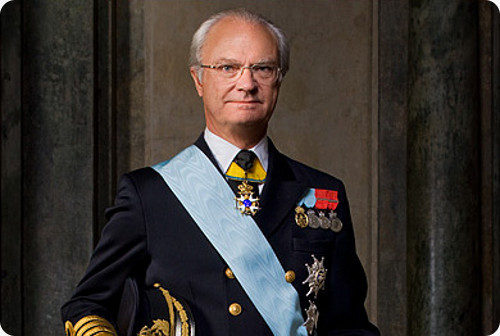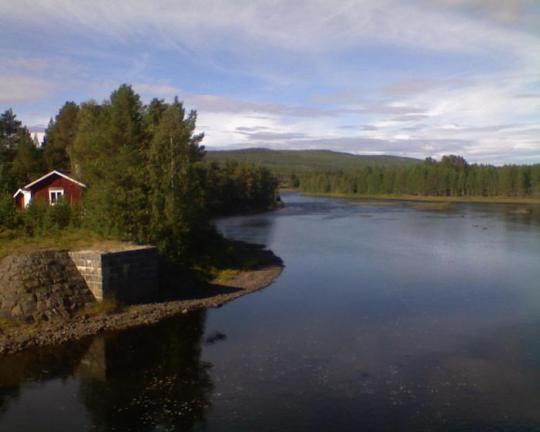Often known under the name Asatru. This blog will focus on historical accuracy and reconstructionism but also on the contemporary religion and sometimes wander into other heathenry, like Anglo - Saxon faith, Odinism, Theodism and so on. There will however never be any bigotry, homophobia, anti Semitism or stupid ideas of a "pure" Germanic race.
Don't wanna be here? Send us removal request.
Photo

Congratulations to His Majesty Carl XVI Gustaf , King Of Sweden on his 70th birthday!
57 notes
·
View notes
Photo


Here People Still Were Using Runes in the 20th Century
In Scandinavia, use of runes ended during the 13th century. In isolated Älvdalen in Sweden, however, inhabitants not only continued using runes but also developed their own language with many Norse elements.
People in Älvdalen (English: the River Valley) used runes as late as the 20th century, so-called Dalecarlian runes. Deep forests and high mountains isolate the valley located in Dalarna County in Central Sweden. The area also has its own language, Elfdalian, still spoken by locals.
In the Nordic countries, runes were the dominant written language before the introduction of Christianity and the Latin alphabet in the 800-900s.
It is know that some places in Gotland and Iceland used runes until the 1600s.
The runes in Älvdalen are found on houses, furniture and the like. They were also carved into wooden sticks that were sent as messages between farms.
Keep reading
2K notes
·
View notes
Photo
Finland

Mökki by the lake
photo credit:lomasuomessa.fi
102 notes
·
View notes
Video
youtube
Pronunciation of Old Norse Gods' Names
SIMPLIFIED INSTRUCTIONS (presuming an American English background)
Stress/accent is always on the first syllable: SKARPheðinn, KÁRi, GUNNarr.
Vowels
a, e, i, o, u | Pronounce as in Spanish, i.e. the vowels in rot, set, seat, wrote, root.
é, í, ó, ú | Slightly longer versions of the above, i.e. the vowels in said, seed, road, rude. See also á, below.
ǫ | Like the o in a New Jersey pronunciation of coffee, i.e. like saying “aaah” with your lips rounded to a circle.
y and ý | Like u, but further forward in the mouth – think of a “surfer” pronunciation of dude (or German ü). As usual, ý is held just a little longer than y.
á | Despite its appearance, this is not a long version of a, but a long version of ǫ. Try saying the aw of awful with a New Jersey accent.
æ | Pronounced like the a in bad.
ø | Sounds like the u in a London pronunciation of hurt (i.e. without the r following).
ǿ or œ | Slightly longer version of the above, i.e. like the i in a London pronunciation of bird.
au | Like the ou in house.
ei | Like the ai in rain.
ey | Something like the oy in boy, more accurately like Norwegian øy or German äu.
Consonants
b, d, h, k, l, m, n, t | These are pronounced exactly how you would expect them to be from English.
f | usually pronounced like the v in very, except when it is the first letter in a word (then it is pronounced f like in father)
g | pronounced “hard” like in go, never like in gin
j | pronounced like the y in yes
p | Normally pronounced like English p in park, but probably more like an f (actually a bilabial fricative, [φ]) before a t (like in aptr).
r | This was probably a rolled or trilled r, like in Spanish or Scots.
s | Pronounced like the s in so, not with the z-sound of the s in rose.
v | Pronounced like the v in very, although probably pronounced like a w when it follows another consonant (so think hvat = hwat, svá = swá). This is a pattern also seen in Afrikaans, and suggested by some Scandinavian dialects (like in North Jutland).
z | Pronounced like the ts in rats, not like an English z.
Þ þ | Pronounced like the th in thunder or thorn (the letter’s name is Thorn). Note that Þ is the capital letter, þ is the small letter.
Ð ð | Pronounced like the th in either or weather (the letter’s name is Eth). Note that Ð is the capital letter, ð is the small letter.
Blog: https://tattuinardoelasaga.wordpress.com/2014/08/09/pronunciation-of-old-norse/
1K notes
·
View notes
Video
youtube
What did Old Norse sound like?
I just happened to see a video presenting modern Icelandic as old Norse again.
Despite me and others pointing this out the same dude is still there (two years later) in his white beard and hammer shirt ( since that how Nordic people looks ) and all the internet experts rant against eachother in the comments ( sorry if i have a sh*tty attitude. I have a slight fever and feel generally easily bugged)..
Well, Dr. Jackson Crawford is an actual scholar with a PhD in Scandinavian studies focusing on Old Norse. He pronounces Norse the only way i have ever heard it from anyone outside of the web (not that anyone can know exactly how it was pronounced and there would have been regional variances even before it split into east and west Norse. But linguists can reconstruct and i prefer academics to romanticists).
Again, sorry about my abrasive tone.
338 notes
·
View notes
Photo

Fridtjof Nansen
Explored the Arctic and the Antarctic
Helped found modern neurology
Created the first refugee passport, saving hundreds of thousands of lives
Was one of the key people making Norway an independent nation from Sweden
Earned a Nobel Peace Prize
And sported the finest mustache in Norway and, probably, the world
I have a hard time believing that one person can be a scientist, explorer, and international diplomat and have an entire lifetime of success in each field, but he actually did!
664 notes
·
View notes
Text
Embark
Why do you ask.?
Is my “permission” what will make you leave shore?
Will you be a true “viking” if you follow rule?
Hurl you unweary heart into the ocean and ask me nought.
Be brave, be nought, and ask not at all.
Ask nought and embark.....now...
4 notes
·
View notes
Video
youtube
Making, testing and repairing a Viking center-grip shield
Skallagrim
Materials used: - 7 mm (9/32'') pine boards - Wood glue - Linen cloth - Shield boss: http://ww4.aitsafe.com/go.htm?go=kult... - Linen cloth - Rawhide from a dog chew (optional) - Leather (optional) - Nails or rivets Archaeological sources for original shields: http://members.ozemail.com.au/~chrisa... More information about shields and their use: http://www.hurstwic.org/history/artic... The sword used for the cutting test, The Caithness by Albion: http://ww4.aitsafe.com/go.htm?go=kult...
17 notes
·
View notes
Video
youtube
Difficulty of reconstructing sword & shield combat from early periods (eg. Viking)
scholagladiatoria
Dimicator: https://www.facebook.com/pages/Dimica...
9 notes
·
View notes
Video
youtube
Introduction to mail (chainmail) armour
14 notes
·
View notes
Video
youtube
Experimental archaeologists and problems of weapon or tool use
15 notes
·
View notes
Video
youtube
An overview of leather armour
Check out the channel:
scholagladiatoria
6 notes
·
View notes
Video
youtube
Pros and cons of axes compared to swords
Check out his channel:
Skallagrim
70 notes
·
View notes
Video
youtube
Cutting in combat with medieval spears - HEMA
2 notes
·
View notes
Text
Thought i should post some videos on weapons, shields, combat that might have some relevance.
So....here we go...
2 notes
·
View notes


